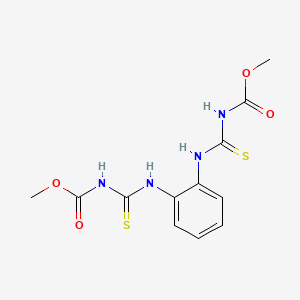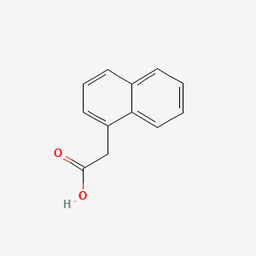


Thiophanate Methyl is a systemic broad-spectrum fungicide belonging to the benzimidazole class. Upon application, it is converted into carbendazim, which inhibits fungal cell mitosis by disrupting microtubule formation. Thiophanate is fit for foliar, seed, and soil treatment across cereals, fruits, vegetables, and ornamental crops. Thiophanate Methyl can also be used on economically important crops and against economically essential crop pathogens. It can be mixed with many kinds of fungicides, pesticides, and herbicides and also for use in textile papermaking and leathers.


Thiophanate Methyl is a systemic broad-spectrum fungicide belonging to the benzimidazole class. Upon application, it is converted into carbendazim, which inhibits fungal cell mitosis by disrupting microtubule formation. Thiophanate is fit for foliar, seed, and soil treatment across cereals, fruits, vegetables, and ornamental crops. Thiophanate Methyl can also be used on economically important crops and against economically essential crop pathogens. It can be mixed with many kinds of fungicides, pesticides, and herbicides and also for use in textile papermaking and leathers.

.3d8f8f41.svg)
Agrochemicals
.3556d45a.svg)

Crop Protection & Pest Control


Fungicides
Included in Quote
Included in Quote
Included in Quote
Included in Quote

Chemical Properties & Specifications
Reproductive Toxicity: Category 2 Aquatic Toxicity (Chronic): Category 2
H361d: Suspected of damaging the unborn child H411: Toxic to aquatic life with long-lasting effects
P280: Wear protective gloves/protective clothing/eye protection P273: Avoid release to the environment P501: Dispose of contents/container in accordance with regulations
Powdery mildew, leaf spots, scabs, anthracnose, and root rot
Citrus, grapes, bananas, apples, beans, rice, ornamental plants
*Foliar spray, seed treatment, soil application *Field usage: Typically 500–1000 g a.i./ha depending on crop and region
*Fungicide formulations: Used in standalone and combination for broad-spectrum fungal control in fruits, vegetables, and ornamental crops.
*With Carbendazim, Mancozeb *In WP, SC, and FS formulations
*Effective both preventively and curatively *Good environmental stability for long-lasting performance *Can be tank-mixed with various insecticides or foliar nutrients
15–30°C (in dry, ventilated space)
25 kg fiber drums / 50 kg HDPE drums
Max 2 drums high
2 years under recommended storage conditions
Containerized, moisture-protected packaging

CAS No. : 86-87-3
Category : Plant Health, Nutrients & Soil Management
Sub-Category : Plant Growth Regulators & Harvest Aids
Description: 1-Naphthaleneacetic Acid (Alpha NAA) is a synthetic plant hormone belonging to the auxin class. It i...